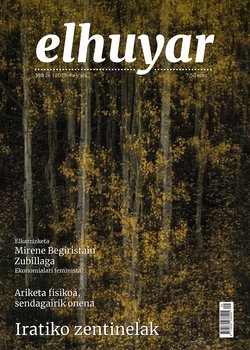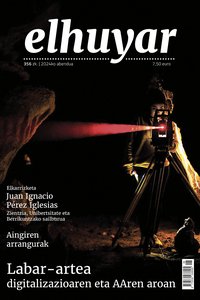[Toxins in cocoa]
Submitted by:
Who doesn’t like chocolate? For many, eating is a pleasure that can create weariness, replace other vices, or even encourage the saddest person. The main ingredient in making chocolate is cocoa. Now we know a little more about this product. The University of Navarra has discovered a toxin called Ocratoxin A in cocoa.
The cocoa plant is from South America. By the seventh century, the Aztecs and Mayans already made chocolate with cocoa. Hernán Cortés brought it to Europe and its consumption gradually expanded. Today it is consumed all over the world and cocoa is produced in several countries: In Brazil, Colombia, Ecuador, Cameroon, Indonesia, Malaysia ... However, the one that produces the most is Côte d’Ivoire. It produces more than 3 million tons per year worldwide.
The tropical climate is ideal for growing cocoa, in short, warm and humid weather. After five or six months of fruit on the tree, it is allowed to ripen on the ground for 3 to 6 days after harvesting. Then it is to open the fruit and extract the pulp that is inside. The butter is removed and the seeds are placed in the sun for another five or six days before being wrapped in sacks. Cocoa is normally marketed in this way by producers, and subsequent processing is carried out by chocolate producers. It is often necessary to control this drying phase very well in order for the seeds to have an adequate level of moisture. However, toxins can contaminate cocoa.
Until a few months ago, Susana Amezqueta has been a researcher at the Faculties of Science and Pharmacy of the University of Navarra. In his thesis he has studied imported cocoa samples and found in more than three quarters the toxin called Ocratoxin A.
SUSANA AMEZQUETA, researcher: These toxins are a series of substances produced by moulds through their metabolism. If the cocoa beans are in a stressful situation, such as if there is a lot of moisture in the store or if there has been a lot of rain, molds can form, and depending on the conditions, these molds can also produce toxins
Ocratoxin is present in various products that we take daily, such as cereals, coffee, cocoa, beer and spices. This toxin is very persistent in chemical terms and is not eliminated during cooking. The European Union has limited the level of Ocratoxin that coffee or cereals can contain and will do the same with cocoa.
The occurrence of this toxin under normal conditions is in principle much lower than what the European Union can regulate in the case of cocoa.
SUSANA AMEZQUETA, researcher: The results of my work are, in principle, lower than the levels foreseen by law, but it has not yet been determined.
The laws have very well established what they must control in order for the damage to be null or minimal. We have to keep in mind that children also consume chocolate, for which the level of tolerance is lower. We are therefore talking about very strict control requirements, both with regard to toxins and other substances.
Consumables are protected, the state and the European Union try to regulate the levels of these mycotoxins and have their stores controlled. So, to us, to the consumers, these pico-toxins don't hurt us. They are controlled)
Researchers have been studying the potential harms of this toxin in experimental animals for the time being. Given very high doses and after very long periods of experimentation, problems of insufficiency have been observed in the kidney of these animals and, in the most severe cases, some tumor in the same organ. It has also been shown that animals on some farms, especially pigs, have had kidney problems after eating a feed heavily contaminated by Ocratoxin for a long time. The presence of this toxin in human blood has been observed, but to date, no trace of plague has been detected among humans.
ADELA LÓPEZ DE CERAÍN, researcher: There have been some indications but no epidemiological evidence. So we can't clearly see if it's a problem for man or not. But, of course, knowing the effects on animals, and on the other hand, having demonstrated that foods that are consumed very often can be contaminated... we must pay attention. Society needs to know that food has to go through very strict controls and that there is a lot of research behind it. We need to look at the doses at which toxicity occurs and put very low limits that are safe for humans
Ocratoxin A is mostly present on the surface of cocoa beans. In the process of transforming the food, this skin is completely rejected. For this reason, in derivatives such as chocolate, this toxin is unlikely to be present. In contrast, in high fiber products, this cocoa shell is commonly used as a dietary supplement. In this case, there is a risk of excretion of the toxin. To avoid the problem, the researcher Amezqueta has designed a chemical procedure that reduces Ocratoxin by 98%. It is a very simple method, the removal of the substance by means of carbon solutions.
The research work of Susana Amezqueta has been carried out in the CIFA building of the University of Navarra, the research center of applied pharmacobiology. During the last ten years, research on mycotoxins has been carried out in these facilities. During this time the origin of Ocratoxin has been studied, the presence of this toxin in products such as coffee, grapes or cereals has been measured, and more information has been obtained about the toxic characteristics of the promotion. Now the research has been extended to other toxins and very innovative techniques have begun to be used in order to achieve better results.
ELENA GONZALEZ PEÑAS, researcher: We are currently working on a number of doctoral theses. In one, for example, we want to determine the level of patulin in products made with apples, such as juices or purees. It’s also very interesting that we have started a new study. We want you to recognize more than one toxin in a single food. There is a census to think that what reaches the consumer is a food contaminated with different toxins. In addition, toxicologists have pointed out that eating these foods at the same time or making them one by one has different consequences.
According to the University of Navarra, it is impossible to reduce the level of these toxins to zero, but do everything possible to avoid passing through certain limits.
Buletina
Bidali zure helbide elektronikoa eta jaso asteroko buletina zure sarrera-ontzian










